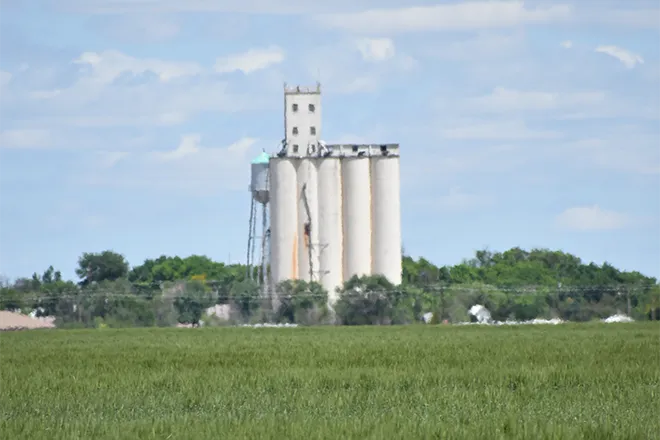
Farmers' advocates, fertilizer industry at odds over prices
Mike Moen
(Iowa News Service) The fertilizer industry is scrambling to find solutions to fertilizer prices that have been on the rise since last fall, but some farmer advocacy groups worry the efforts being made don't address the control big fertilizer companies wield over the market and the effects of synthetic fertilizer on the environment.
A document published earlier this spring by the Fertilizer Institute, an organization that represents and advocates for the fertilizer industry, highlights several action items for lawmakers and farmers to strengthen the domestic fertilizer supply and maximize usage. The goal is to get these action items in front of as many policymakers and constituents as possible to push for stronger fertilizer legislation, according to Corey Rosenbusch, president and CEO of the Fertilizer Institute.
"Last fall, when we started to see significant shifts in the market, farmers were quite concerned about the crop inputs and what that was going to mean for their upcoming planting season and crop season," Rosenbusch said. "[The Fertilizer Institute] hit the road and visited with a lot of farmers and commodity groups to inform them of what was going on in the markets and why we saw prices rising."
These conversations led the organization to put together the short and long-term solutions laid out in the policy solutions document.
Among these solutions include eliminating fertilizer export restrictions in China, dropping vaccine mandates across Canada-U.S. borders for truck drivers transporting fertilizer, and encouraging growers to adopt 4R Nutrient Stewardship practices - a framework that helps farmers identify how much of and what kind of fertilizer to use, as well as when the best time to apply it is and where on the farm.
According to one farmer advocate, these solutions don't address what he believes is a key cause of these high prices: price manipulation by the small number of fertilizer companies controlling the industry.
"The way [this document] approaches the issue as though there is a long-term supply-demand failure within fertilizer ignores that the issue we've been having with fertilizer is as much an issue of concentration and price gouging as it is supply disruption," said Joe Maxwell, president of the advocacy group Farm Action.
Four corporations control 75% of nitrogen fertilizer production and two companies control the majority of potash production in North America, according to research from the Bureau of Economics and the Agriculture and Applied Economics Association. Between 1984 and 2008, the number of fertilizer producers decreased from 46 firms to 13.
While the Fertilizer Institute doesn't acknowledge this issue in their document, it is being addressed by the USDA. On March 17, a notice from the USDA seeking public input on a document titled "Access to Fertilizer: Competition and Supply Chain Concerns" was published in the Federal Register. The deadline for comment was recently extended to July 15.
"USDA is committed to using every tool at its disposal to enhance competition and improve resiliency in the fertilizer market," said Andy Green, senior advisor for the USDA's Fair and Competitive Markets program, in a USDA press release. "Finding ways to encourage sustainable and independent choices for fertilizer supplies demonstrates the Biden-Harris administration's ongoing investment in American goods and services to rebuild a more resilient, secure, and sustainable economy."
In mid-March, the USDA announced plans to allocate $250 million in grants to farmers to address rising fertilizer costs and encourage competition. Two months later, Secretary Tom Vilsack announced an additional $250 million to be directed toward farmers. The comments from the document published in the Federal Register will inform how these grants are used.
"There is definitely room for that money to be spent promoting the idea that our long-term fertilizer solution has to be tight nutrient cycling on-farm and therefore reducing farmer need for fertilizer in the first place," said Jesse Womack, conservation policy specialist with the National Sustainable Agriculture Coalition. "This means not just creating additional domestic production of fertilizers but truly reducing farmer dependence on fertilizer."
While it's unlikely the use of synthetic fertilizer could be totally eliminated, Womack said, reducing the amount that is used is one way farmers can be more resilient in the face of high fertilizer prices.
Organizations like the National Sustainable Agriculture Coalition and Farm Action are working to build incentives into the 2023 Farm Bill that would encourage use of agriculture practices like crop rotation (growing different types of crops in the same location), cover crops that grow nutrients in place, and both off- and on-farm composting to improve soil health.
Fertilizer representatives aren't as convinced dependency can be reduced. "Without fertilizer, you can erase 50 percent of crop yields and we've been talking about massive starvation and food security," said The Fertilizer Institute's Rosenbusch. "Now that [this issue] is front and center we realize that the foundation of long-term food security is access to fertilizer."
The Federal Register's public comment portal on consolidation in the fertilizer industry can be accessed here. The Fertilizer Institute's policy solutions document can be accessed here.
This story was produced with original reporting from Claire Carlson for the Daily Yonder.
















